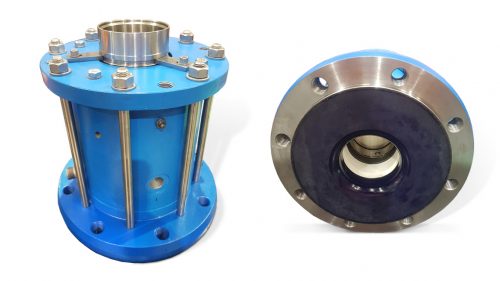As we already saw in previous blog entries, agitators/reactors are a very special type of machine that is usually involved in the main processes of many facilities. This type of system requires mechanical seals that provide the highest level of service.
In some cases, apart from the usual requirements for agitators to be able to operate in dry conditions, at high temperatures and with axial/tangential force, there are other, more demanding requirements such as being in contact with extremely aggressive chemicals or abrasive substances. The agitators that operate under these conditions usually have enamel-coated interiors and they are known as “glass lined vessels”.
To operate in these facilities, Lidering has the LSC82/LDC82 models. These models have a similar structure to the LSC80/LDC80 agitator seal models, but with metal components coated with special compounds that increase their resistance to chemicals and steel abrasion. In particular, we refer to parts that come into contact with the agitator interior.

In other cases, the agitator design means that the motor is located at the bottom of the agitator. This means that the seal operates with the “product part” immersed in the fluid. This requirement entails the need to design a special solution that permits the agitator interior to be emptied and cleaned, thus preventing the blocking of the seal due to the presence of extremely viscous and/or sticky fluids that could solidify.
The LSC83/LDC83 models are specially design to work under these conditions. The seal on the product side is located outside the cartridge flange, unlike the standard models, where the seal remains inside the agitator. This permits the use of the hygienic configuration designed and established for other hygienic seals such as the LWS31: specially-machined seals with rounded edges, ground polished surfaces, etc.

In addition, due to the location of the seal on the product side inside the agitator and not inside the cartridge, the cartridge height (the part that protrudes from the agitator structure) is reduced considerably. This allows it to be installed in applications where there is very little space. This feature brings the bearing closer to the end of the shaft, which brings greater tolerance to possible warping and other movements of the shaft, giving a better result in side-entry agitators.









